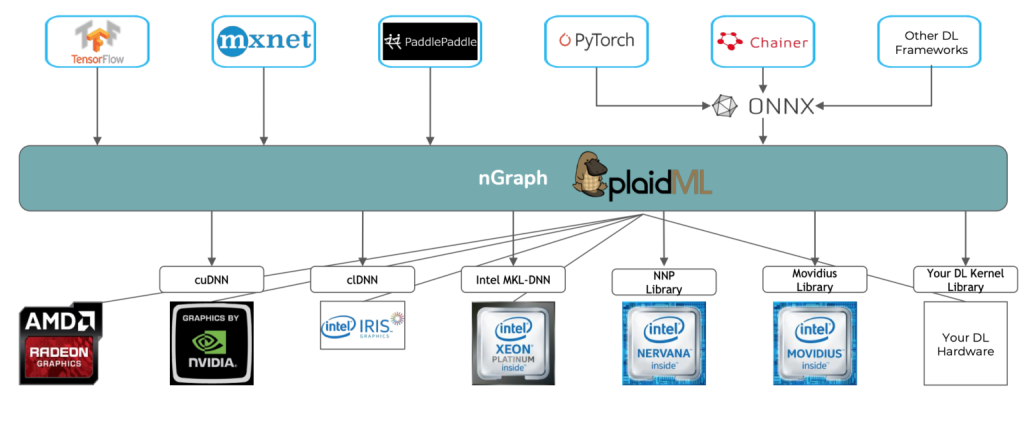
The landscape of deep learning tools is constantly evolving, with new options emerging and established players refining their offerings. Here’s a glimpse into some of the top deep learning tools in 2024, categorized based on their strengths and use cases:
1. TensorFlow:
- Strengths:
- Versatile and open-source, backed by Google and a large community.
- Supports various architectures (CNNs, RNNs, etc.) and deployment options (cloud, mobile, edge).
- Extensive ecosystem of libraries and pre-trained models.
- Use cases:
- Image recognition, natural language processing, recommender systems, and more.
- Considerations:
- Can have a steeper learning curve compared to some other tools.
- Might require more coding expertise for complex tasks.
2. PyTorch:
- Strengths:
- Dynamic computational graph, enabling flexible experimentation and research.
- Pythonic interface, considered intuitive and user-friendly by many.
- Growing ecosystem and community of tools and libraries.
- Use cases:
- Computer vision, robotics, natural language processing, and research applications.
- Considerations:
- Might be less performant than TensorFlow for some specific tasks.
- Can require additional libraries for production deployment.
3. Keras:
- Strengths:
- High-level API built on top of TensorFlow or PyTorch, simplifying model development.
- User-friendly and simple to learn, even for beginners.
- Fast prototyping and experimentation with various deep learning architectures.
- Use cases:
- Rapid prototyping, experimentation, and educational purposes.
- Considerations:
- Not ideal for large-scale production deployments.
- Limited flexibility compared to lower-level frameworks.
4. MXNet:
- Strengths:
- Scalable and portable, runs efficiently on diverse hardware platforms.
- Favors multiple programming languages (Python, R, Scala, Julia).
- Growing community and ecosystem, particularly in Asia.
- Use cases:
- Image recognition, natural language processing, and distributed deep learning applications.
- Considerations:
- Smaller community and ecosystem compared to TensorFlow or PyTorch.
- Might require more expertise for advanced use cases.
5. Caffe:
- Strengths:
- Lightweight and efficient, suitable for resource-constrained environments.
- Well-established and battle-tested, with a strong community in computer vision.
- Extensive support for convolutional neural networks (CNNs).
- Use cases:
- Image recognition, object detection, and embedded systems applications.
- Considerations:
- Primarily focused on CNNs, less flexible for other architectures.
- Development has slowed down compared to newer tools.
Choosing the right deep learning tool:
The best tool for you depends on your specific needs and priorities. Consider factors like:
- Your skill level: Are you a beginner, researcher, or experienced developer?
- Project requirements: What type of deep learning task are you tackling?
- Hardware and resources: What kind of computing power do you have available?
- Community and support: Do you need an active community and extensive resources?
By carefully evaluating your needs and exploring these top contenders, you’ll find the deep learning tool that empowers you to bring your AI projects to life in 2024.
Say goodbye to the hassles of bike ownership! MotoShare.in offers affordable rentals, whether you need a scooter for errands, a bike for a road trip, or a reliable ride to explore new cities.

